Fiber Monitoring System Applied to Railway Bridge Structures in a Near-Fault Region
Abstract
:1. Introduction
2. Measurement Theory
2.1. Brillouin Frequency Shift in Single-Mode Optical Fiber
2.2. Separating the Temperature Effect on Fiber
2.3. Strain Distribution of Box Girder
2.4. Angular Displacement of Expansion Joints
3. Research Design and Data Collection
3.1. Determining the Test Field
3.2. Installation of Sensing Fiber
3.3. System Framework for Data Collection
4. Results
4.1. Strain Distribution of Box Girder
4.2. Displacement of Box Girder
4.3. Angular Displacement across Multiple Expansion Joints
5. Conclusions
Author Contributions
Funding
Institutional Review Board Statement
Informed Consent Statement
Data Availability Statement
Acknowledgments
Conflicts of Interest
References
- Jing, G.; Qin, X.; Wang, H.; Deng, C. Developments, challenges, and perspectives of railway inspection robots. Autom. Constr. 2022, 138, 104242. [Google Scholar] [CrossRef]
- Hsu, W.-K.; Lee, Y.-L.; Kuan, T.-T. Brillouin Frequency Shift Sensing Technology Used in Railway Strain and Temperature Measurement. Appl. Sci. 2021, 11, 7101. [Google Scholar] [CrossRef]
- Yoon, H.-J.; Song, K.-Y.; Choi, C.; Na, H.-S.; Kim, J.-S. Real-Time Distributed Strain Monitoring of a Railway Bridge during Train Passage by Using a Distributed Optical Fiber Sensor Based on Brillouin Optical Correlation Domain Analysis. J. Sens. 2016, 2016, 9137531. [Google Scholar] [CrossRef]
- Liu, R.-M.; Meng, D.; Li, Z. Study on defects detection of a structure undergoing dynamic load. J. Vibroeng. 2015, 17, 1828–1836. [Google Scholar]
- Yoon, H.-J.; Kim, J.-S.; Song, K.-Y.; Cho, H.-W.; Jung, J.-Y. Distributed Strain Monitoring of Railway Composite Bogies Using a Brillouin Optical Correlation Domain Analysis System. Appl. Sci. 2018, 8, 1755. [Google Scholar] [CrossRef]
- Wheeler, L.N.; Take, W.A.; Hoult, N.A.; Le, H. The Use of Fiber Optic Sensing to Measure Distributed Rail Strains and Determine Rail Seat Forces Due to a Moving Train. Can. Geotech. J. 2019, 56, 1–13. [Google Scholar] [CrossRef]
- Zhang, Z.; Sun, Y.; Zhang, Q.; Duan, J.; Gao, L. Applications of optical frequency-domain reflectometry technology in strain-deformed configuration conversion of structural surface deformed configuration measurement. Int. J. Distrib. Sens. Netw. 2019, 15, 1550147719891636. [Google Scholar] [CrossRef]
- Michael, I. Novel Applications of Distributed Fiber-Optic Sensing in Geotechnical Engineering; vdf Hochschulverlag AG: Zollikon, Switzerland, 2012. [Google Scholar] [CrossRef]
- Minardo, A.; Persichetti, G.; Testa, G.; Zeni, L.; Bernini, R. Long term structural health monitoring by Brillouin fibre-optic sensing: A real case. J. Geophys. Eng. 2012, 9, S64–S69. [Google Scholar] [CrossRef]
- Siwowski, T.; Rajchel, M.; Howiacki, T.; Sieńko, R.; Bednarski, Ł. Distributed fibre optic sensors in FRP composite bridge monitoring: Validation through proof load tests. Eng. Struct. 2021, 246, 113057. [Google Scholar] [CrossRef]
- Galindez, C.A.; Madruga, F.J.; Lomer, M.; Cobo, A.; Lopez-Higuera, J.M. Effect of humidity on optical fiber distributed sensor based on Brillouin scattering. In Proceedings of the 2018 SPIE—The International Society for Optical Engineering, Perth, Australia, 15–18 April 2008. [Google Scholar] [CrossRef]
- Schreier, A.; Wosniok, A.; Liehr, S.; Krebber, K. Humidity-induced Brillouin frequency shift in perfluorinated polymer optical fibers. Opt. Express 2018, 26, 22307–22314. [Google Scholar] [CrossRef] [PubMed]
- Sun, Y.; Shi, B.; Zhang, D.; Tong, H.; Wei, G.; Xu, H. Internal Deformation Monitoring of Slope Based on BOTDR. J. Sens. 2016, 2016, 9496285. [Google Scholar] [CrossRef]
- Klug, F.; Lackner, S.; Lienhart, W. Monitoring of Railway Deformations using Distributed Fiber Optic Sensors. In Proceedings of the Joint International Symposium on Deformation Monitoring (JISDM), Wien, Austria, 30 March–1 April 2016; p. 8. [Google Scholar]
- Rajeev, P.; Kodikara, J.; Chiu, W.K.; Kuen, T. Distributed Optical Fibre Sensors and Their Applications in Pipeline Monitoring. Key Eng. Mater. 2013, 558, 424–434. [Google Scholar] [CrossRef]
- Lu, P.; Lalam, N.; Badar, M.; Liu, B.; Chorpening, B.T.; Buric, M.P.; Ohodnicki, P.R. Distributed optical fiber sensing: Review and perspective. Appl. Phys. Rev. 2019, 6, 041302. [Google Scholar] [CrossRef]
- Horiguchi, T.; Kurashima, T.; Tateda, M. Tensile strain dependence of Brillouin frequency shift in silica optical fibers. IEEE Photonics Technol. Lett. 1989, 1, 107–108. [Google Scholar] [CrossRef]
- Horiguchi, T.; Shimizu, K.; Kurashima, T.; Tateda, M.; Koyamada, Y. Development of a distributed sensing technique using Brillouin scattering. J. Light. Technol. 1995, 13, 1296–1302. [Google Scholar] [CrossRef]
- Kurashima, T.; Horiguchi, T.; Tateda, M. Thermal effects on the Brillouin frequency shift in jacketed optical silica fibers. Appl. Opt. 1990, 29, 2219–2222. [Google Scholar] [CrossRef] [PubMed]
- Bednarski, Ł.; Sieńko, R.; Grygierek, M.; Howiacki, T. New Distributed Fibre Optic 3DSensor with Thermal Self-Compensation System: Design, Research and Field Proof Application Inside Geotechnical Structure. Sensors 2021, 21, 5089. [Google Scholar] [CrossRef] [PubMed]
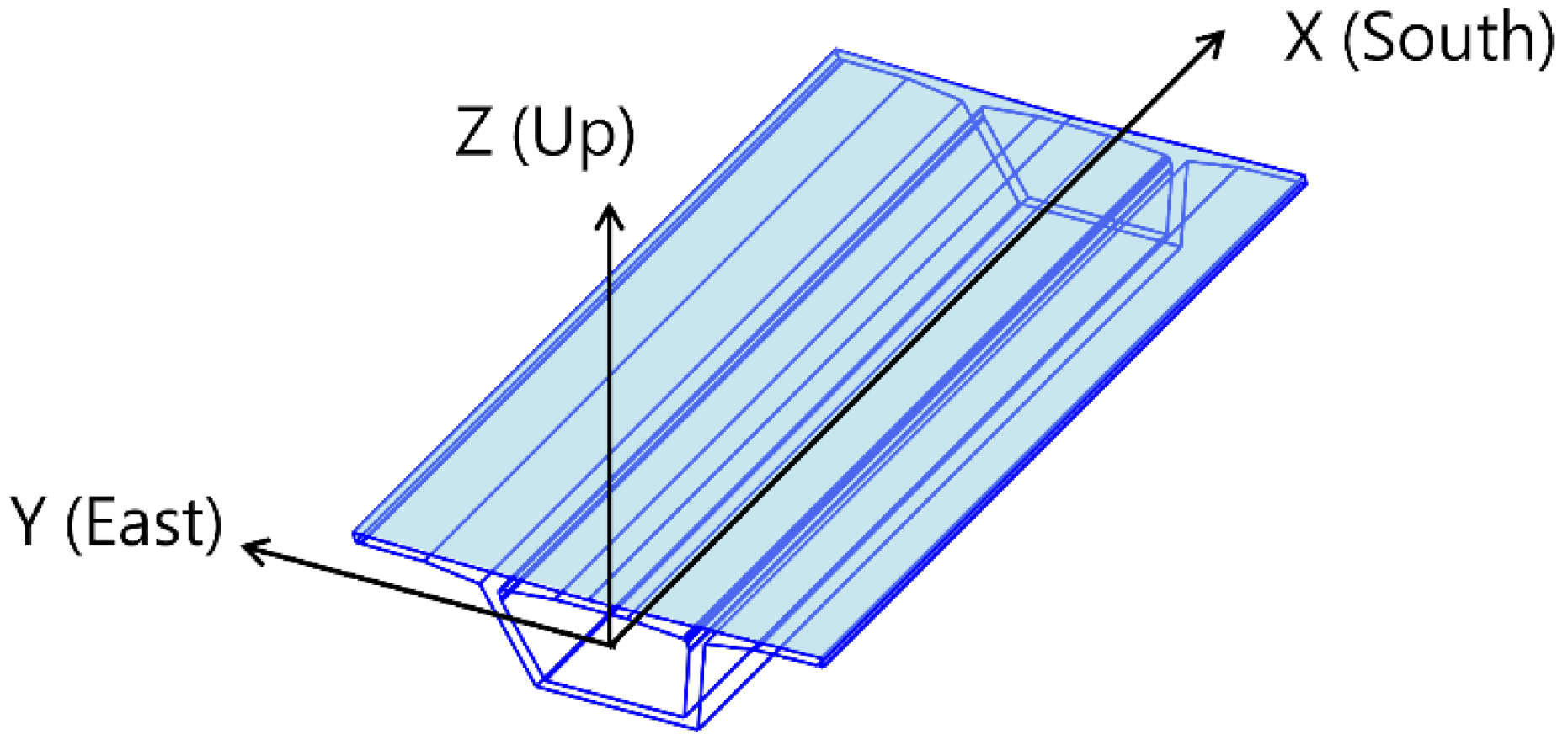
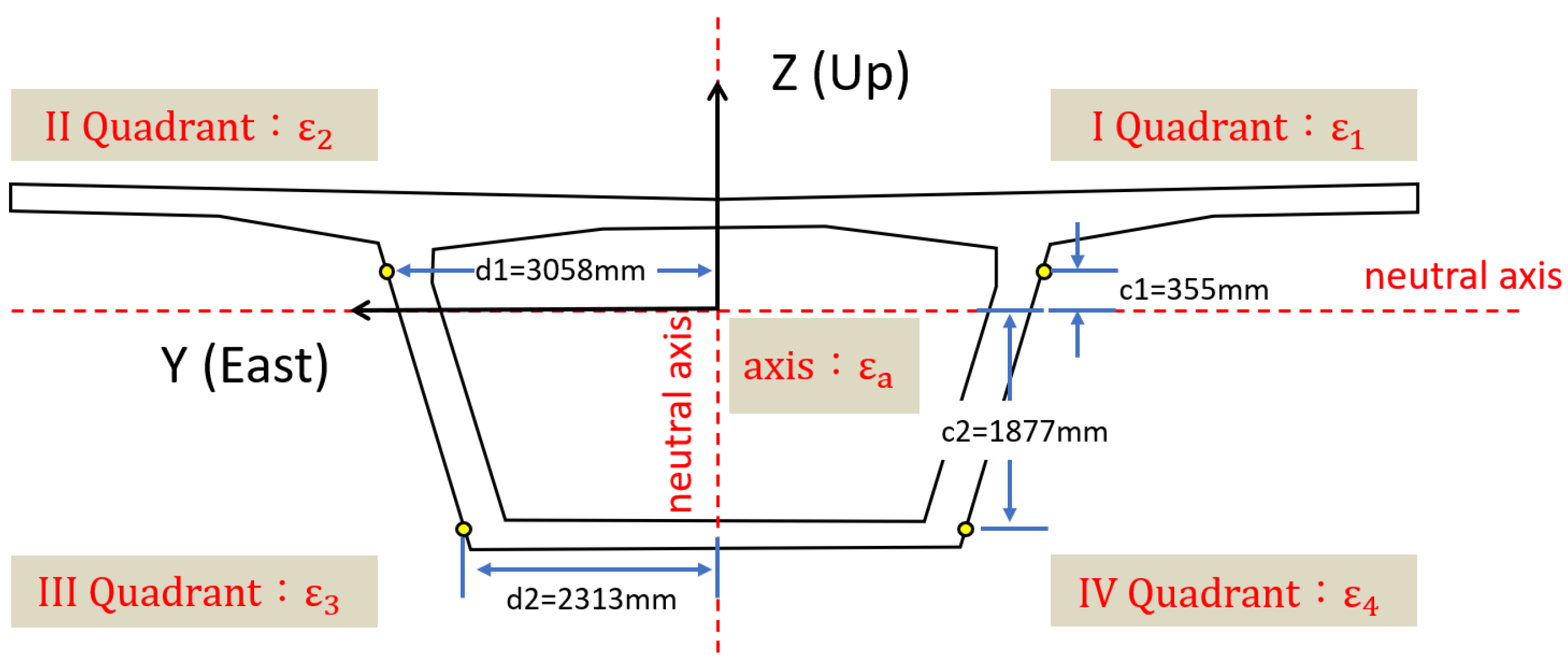


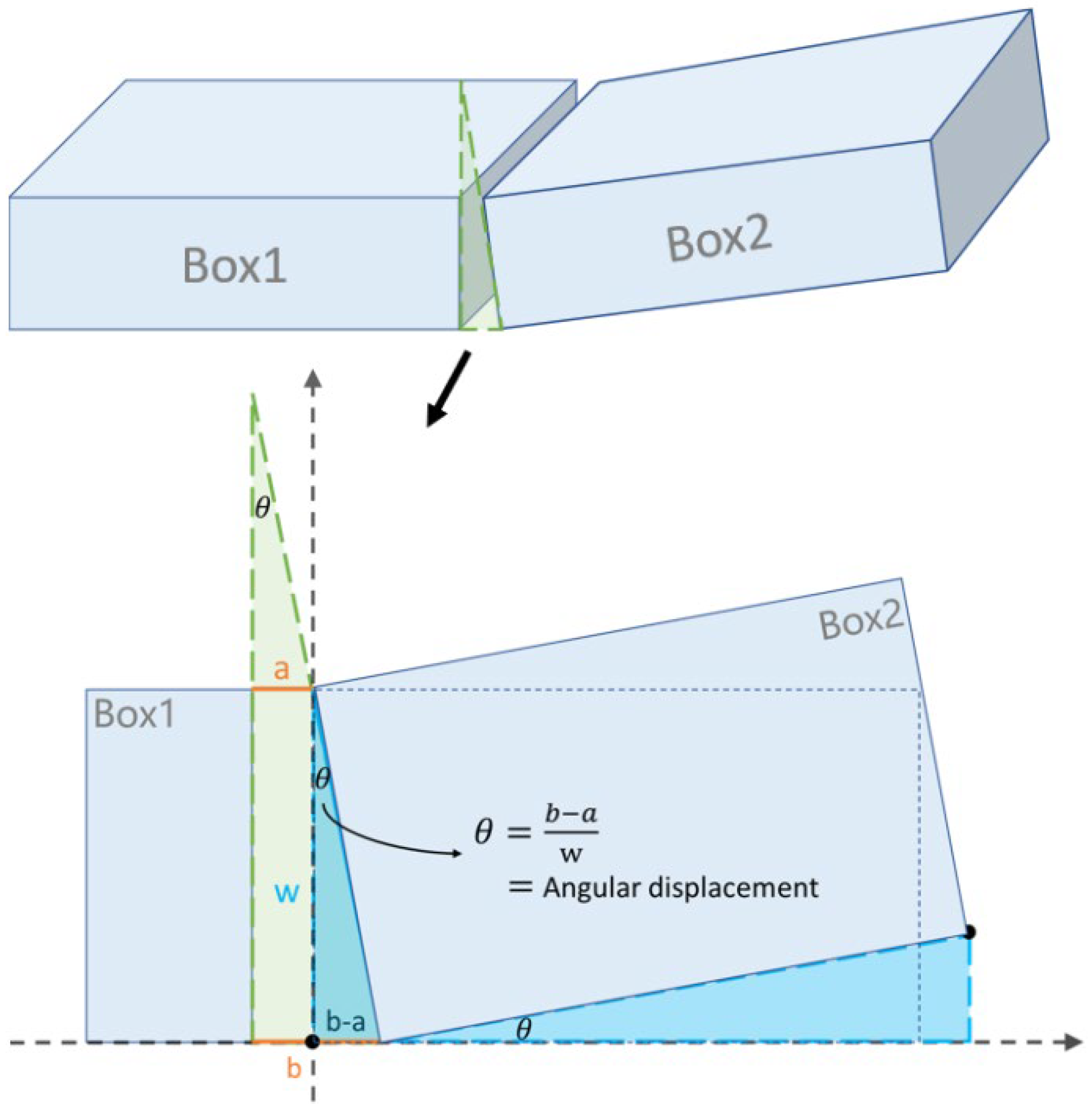
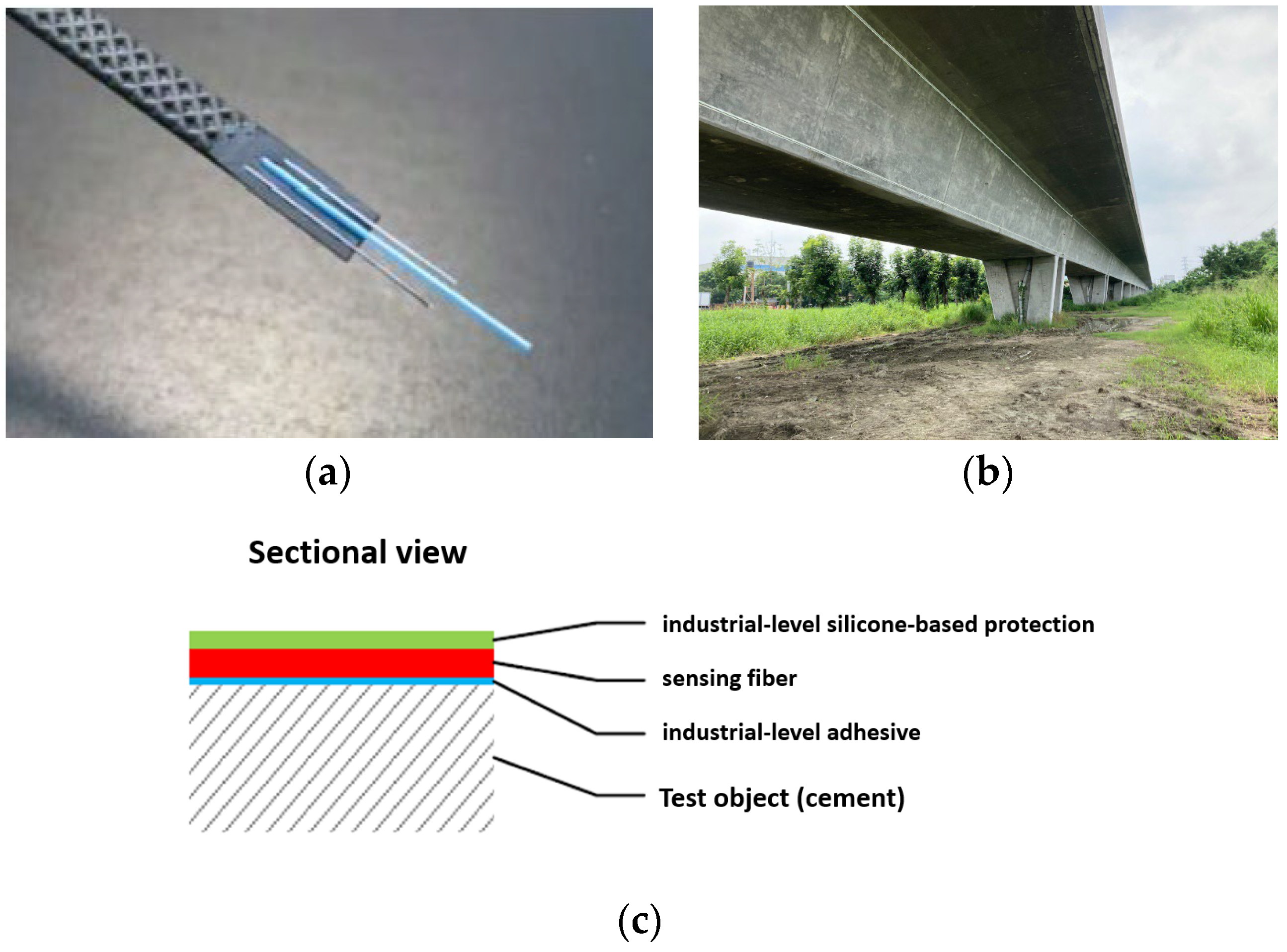
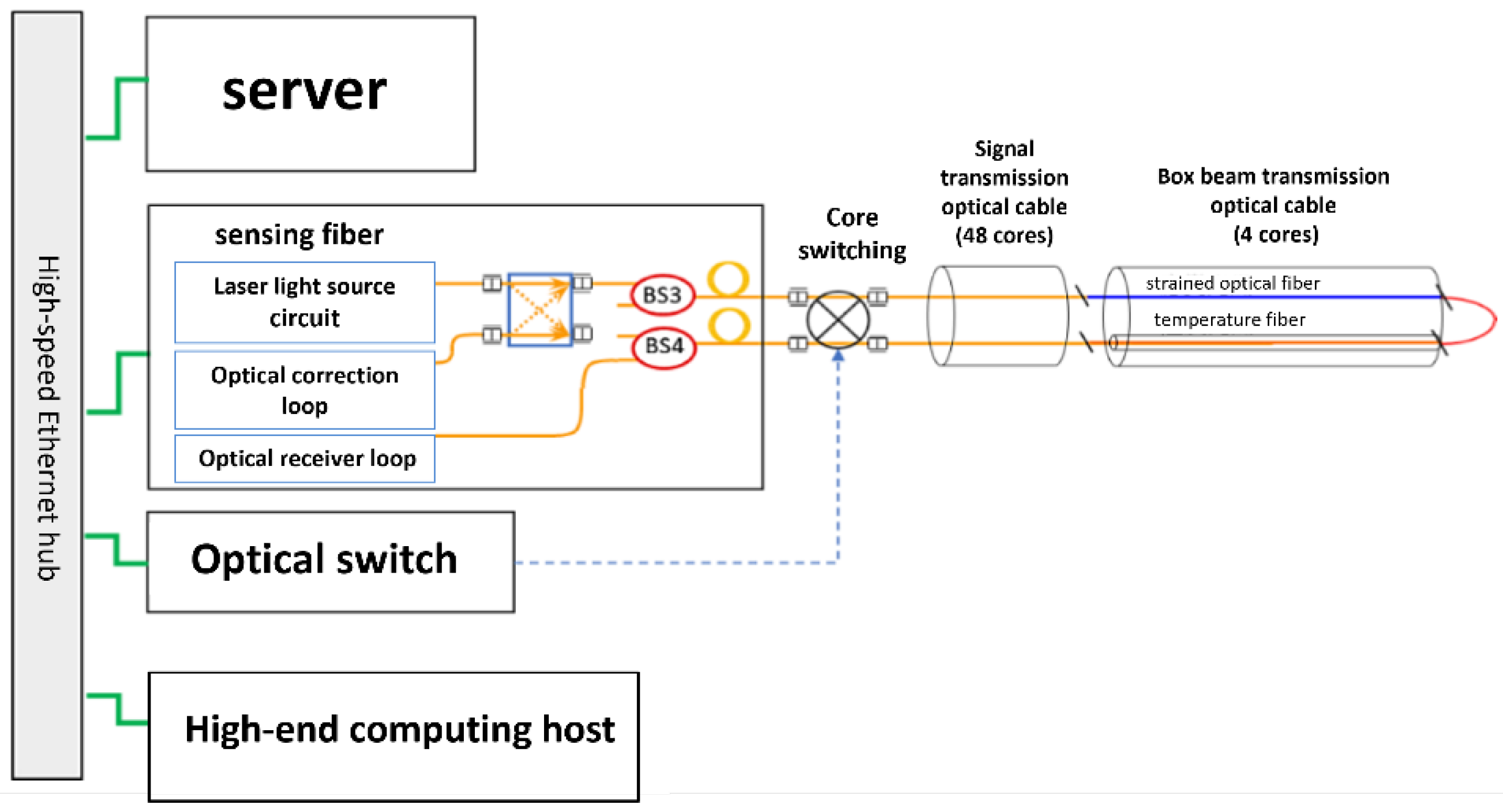
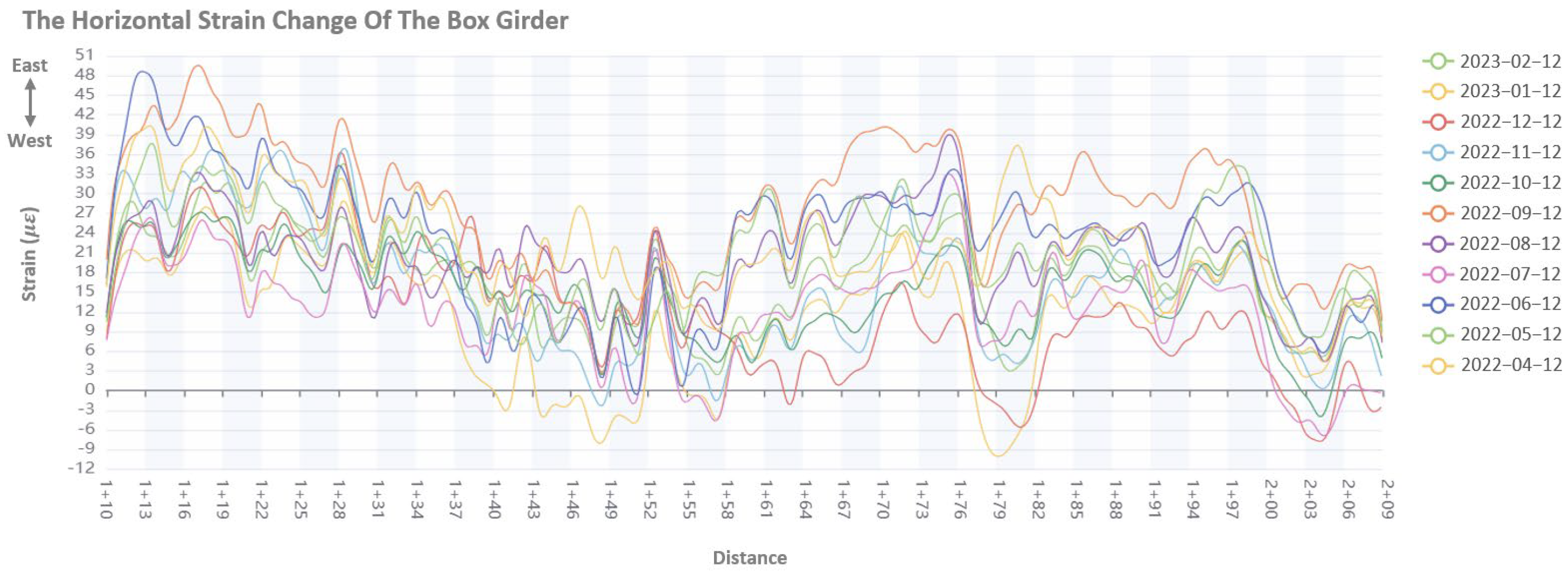
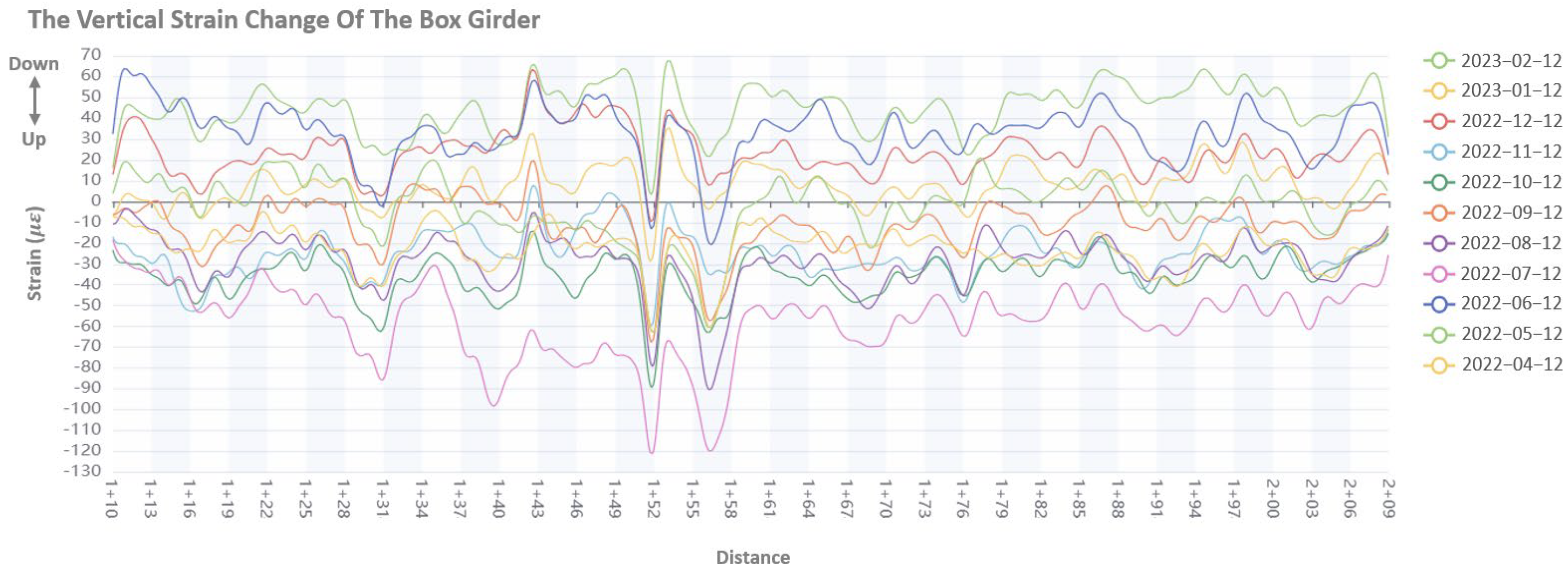

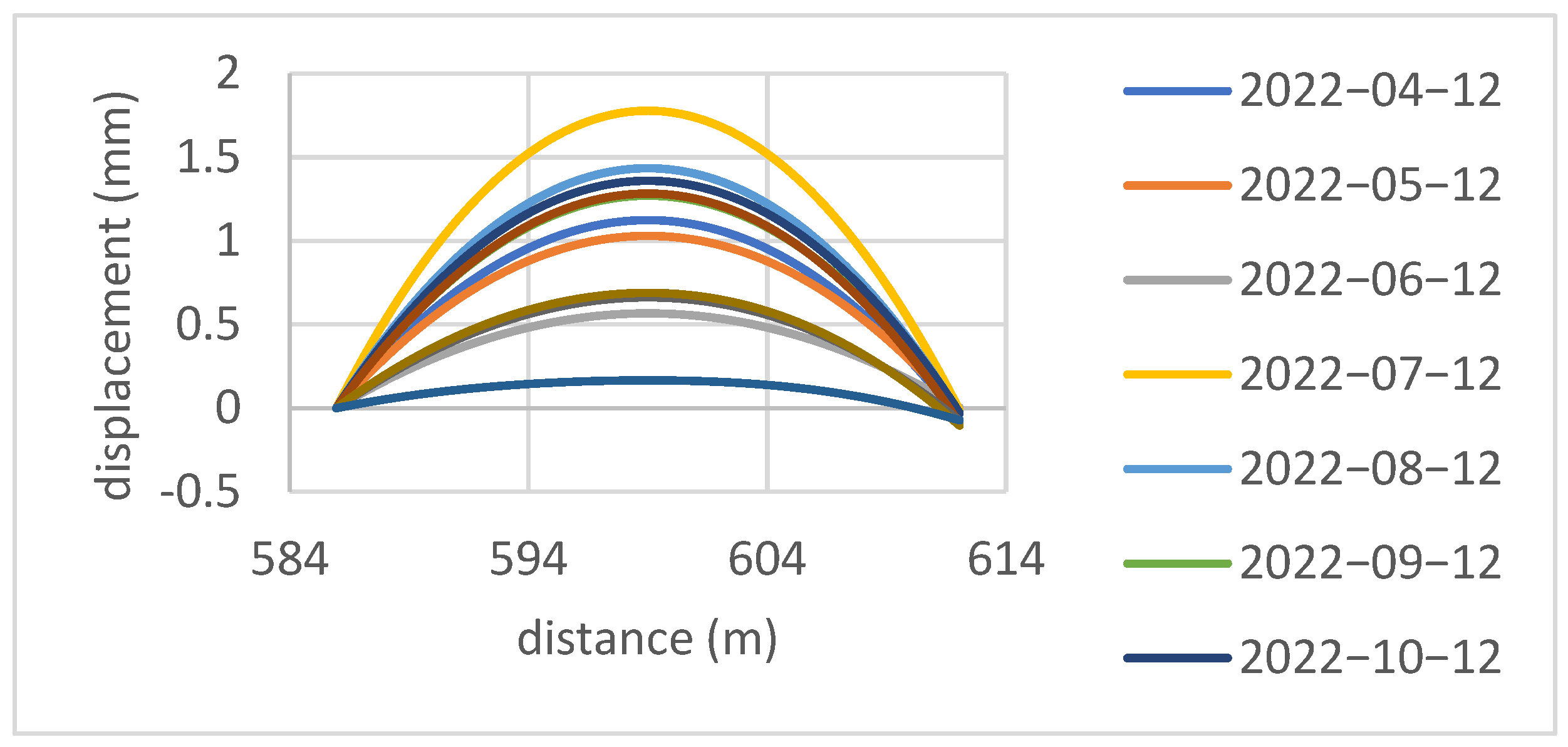
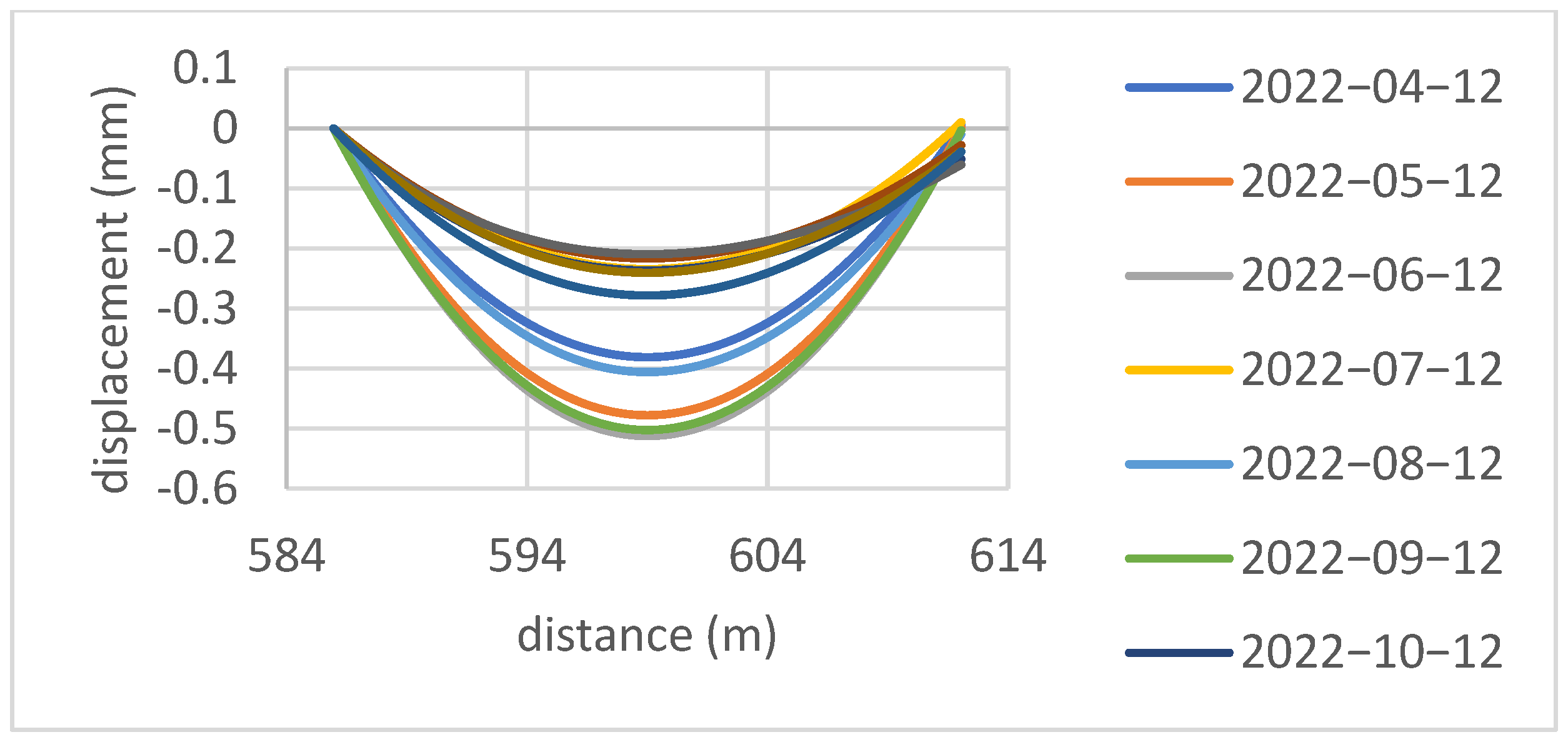

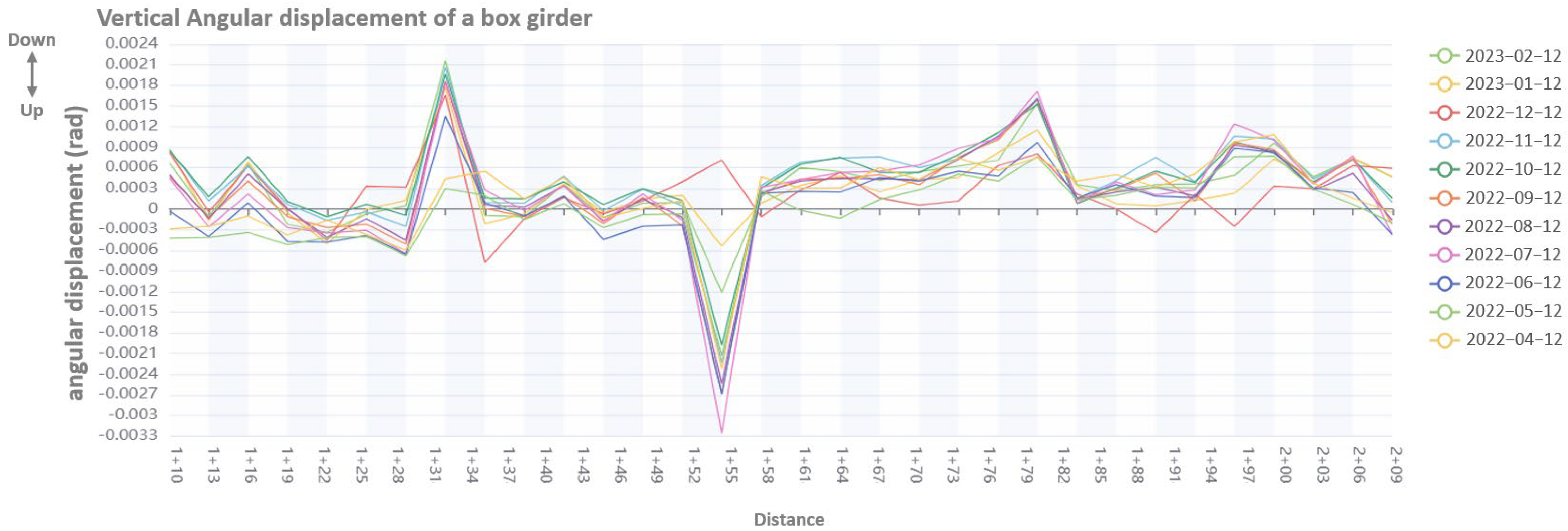
Disclaimer/Publisher’s Note: The statements, opinions and data contained in all publications are solely those of the individual author(s) and contributor(s) and not of MDPI and/or the editor(s). MDPI and/or the editor(s) disclaim responsibility for any injury to people or property resulting from any ideas, methods, instructions or products referred to in the content. |
© 2024 by the authors. Licensee MDPI, Basel, Switzerland. This article is an open access article distributed under the terms and conditions of the Creative Commons Attribution (CC BY) license (https://creativecommons.org/licenses/by/4.0/).
Share and Cite
Su, H.-C.; Hsu, T.-H.; Lee, Y.-L.; Hsu, W.-K.; Yang, N.-T.; Chang, N.-H. Fiber Monitoring System Applied to Railway Bridge Structures in a Near-Fault Region. Appl. Sci. 2024, 14, 7883. https://doi.org/10.3390/app14177883
Su H-C, Hsu T-H, Lee Y-L, Hsu W-K, Yang N-T, Chang N-H. Fiber Monitoring System Applied to Railway Bridge Structures in a Near-Fault Region. Applied Sciences. 2024; 14(17):7883. https://doi.org/10.3390/app14177883
Chicago/Turabian StyleSu, Hsiao-Chen, Tseng-Hsing Hsu, Yu-Lin Lee, Wen-Kuei Hsu, Nien-Tsu Yang, and Ning-Hsuan Chang. 2024. "Fiber Monitoring System Applied to Railway Bridge Structures in a Near-Fault Region" Applied Sciences 14, no. 17: 7883. https://doi.org/10.3390/app14177883






